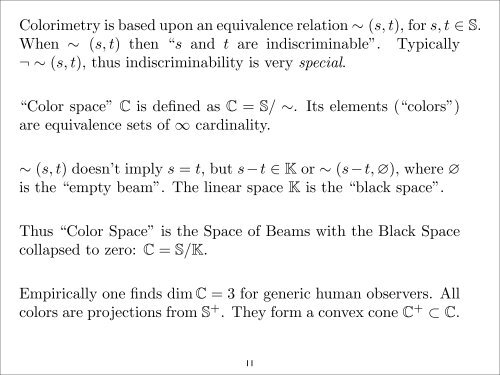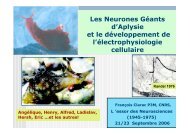La Nature se dévoilant devant la Science
La Nature se dévoilant devant la Science
La Nature se dévoilant devant la Science
You also want an ePaper? Increase the reach of your titles
YUMPU automatically turns print PDFs into web optimized ePapers that Google loves.
Colorimetry is ba<strong>se</strong>d upon an equivalence re<strong>la</strong>tion ∼ (s, t), for s, t ∈ S.<br />
When ∼ (s, t) then “s and t are indiscriminable”. Typically<br />
¬ ∼ (s, t), thus indiscriminability is very special.<br />
“Color space” C is defined as C = S/ ∼. Its elements (“colors”)<br />
are equivalence <strong>se</strong>ts of ∞ cardinality.<br />
∼ (s, t) doesn’t imply s = t, but s−t ∈ K or ∼ (s−t, ∅), where ∅<br />
is the “empty beam”. The linear space K is the “b<strong>la</strong>ck space”.<br />
Thus “Color Space” is the Space of Beams with the B<strong>la</strong>ck Space<br />
col<strong>la</strong>p<strong>se</strong>d to zero: C = S/K.<br />
Empirically one finds dim C = 3 for generic human ob<strong>se</strong>rvers. All<br />
colors are projections from S + . They form a convex cone C + ⊂ C.<br />
11




